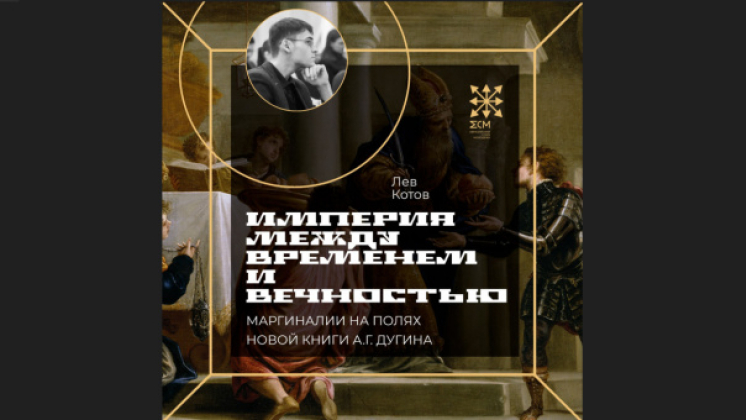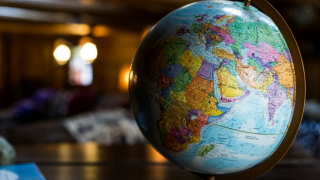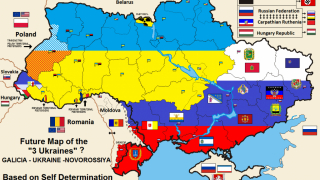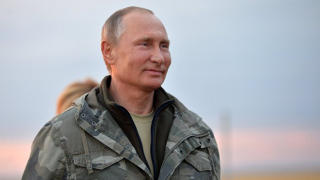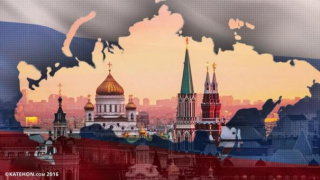Empire between time and eternity: marginalia in the margins of Alexander Dugin's new book
When one begins to review the seminal work of A.G. Dugin's “Genesis and Empire. Ontology and Eschatology of the Universal Kingdom”, one feels extreme uncertainty: where to start? How not to miss the most important thing? Great things are always best seen at a respectful distance, and so we will focus on highlighting a few central thoughts around which the narrative revolves. One of these is the thesis of ontological incorporation attributable to the imperial model. In other words, Empire as a phenomenon and as an idea is inherent in a definite being, independent of its (dis)recognition by those who hold power or those who are subjected to it. However, the state of the current political sphere depends on how exactly we understand Empire (and this is not just a matter of a correct or distorted view).
Strictly speaking, the fundamental relationship between ontology and style of politics in the modern era has already been noted by Gilles Deleuze [1]. For him, it is from the recognition of the unconditional priority of the One that the political practices of hierarchy and domination - both bureaucratic and angelic - grow. And Professor Dugin proceeds from the same attitude - but he does not side with the “mongrel nation”, the eternally migrating and mutating multitude of homeless perverts (as leftist intellectuals in the West from the 1960s onward will do), but remains loyal to the One and the Absolute, that is, ultimately, to God. Here is the first significant feature of this seminal book, so familiar to all admirers of A. G. Dugin's work: a heterodox, sometimes paradoxical, but extremely prescient (prophetic?) combination of different approaches to the problem. Indeed, in Being and Empire, the postmodernist perspective (e.g., Jean Baudrillard's theory of simulacra) goes hand in hand with the paradigm of integral traditionalism, to which the first part of the book is devoted with a detailed and substantive analysis of its main theses.
But why is it necessary to turn to the legacy of René Guénon and Julius Evola (Chapters 1 and 2)? It is not only because good taste and intellectual intuition urge it. In fact, readers themselves are faced with an important question: how to conceptualize the phenomenon of Empire in the most appropriate way? So that none of the local variants of the imperial idea remain excluded from the big picture? Moreover, there are other (anti-)imperial forces at work in history - forces that erase the sacred content from the world, or rather, cut off access to the divine, the transcendent. And here it is not so important what to call these destructive processes - secularization or “world liberation”. It is much more important to apply a general paradigmatic approach to them, regardless of the form in which they manifest themselves. For only in this way can these processes be fully understood and reversed.
All these resonances simply make an appeal to the traditionalist view necessary. The thesis of the essential unity of sacral power structures allows us to place essentially all civilizations (both highly organized and archaic) within the common field of Tradition. The sacredness of power, personalized in the figure of the King of the World, is manifested in Buddhism and Hinduism (Ch. 5), Zoroastrian and Shiite Iran (Ch. 6), the Chinese Empire (Ch. 7), the Celtic and Turanian traditions (Chapters 7 and 8), the Ottoman Empire (Chapter 10), and the precolonial civilizations and archaic cultures of Asia, Africa and the Americas (Chapters 11, 12 and 37). Exploring both mythological accounts and historical-empirical data on the social structure of traditional societies, the author finds the same sacred idea expressed both implicitly (esoterically) and explicitly (exoterically) everywhere. This idea is the “integral unity of the Sacred”, as well as the legitimacy of a power that comes solely and exclusively from Heaven-and for Heaven's sake. This allows A. G. Dugin to take the next step and move from myth to history and politics.
The imperial order is not so much the king of the world, the holy king, the holy emperor as such, because he can remain unrevealed, sleeping an uninterrupted “sleep of the bogatyr” - like the King Arthur of Celtic legends (ch. 8) or the German emperor Frederick I Barbarossa (ch. 35). Much more important is the policy the Empire pursues to be worthy of its name. Does it realize the connection between heaven and earth, does it elevate man to an angelic state? Or is it driven only by the thirst for profit, promoting the most hellish perversions in the masses, bringing upon people the appearance of demons and turning God's world into hell...? As we can see, in the Empire the line between politics and religion is blurred, because building bridges between the human and the divine becomes the main goal of the imperial order. In the first chapter, which deals with the vicissitudes of medieval scholasticism, Professor Dugin finds the temporal equivalent of the imperial form: the “little eternity” (Aquinas' aevum), which lies between the eternal and unchanging being of God (aeternitas) and the transitory time of the commodity world (tempus), which finds its end in dust. Empire lies in the space between time and eternity, between heaven and earth.... To prevent the “mystery of iniquity” from being embodied in the Antichrist (ch. 21), to prevent the demon Kali (descendant of A-dharma, i.e., “iniquity”) from plunging the world into the power of the Subcorporeal Lie (ch. 5)-this is the metapolitical horizon of Empire, in whatever form it presents itself.
The first part of the book should be seen not only as a theoretical introduction and explication of basic concepts on concrete historical material. It is also a prologue to the mystery of the Christian Empire-the “Great Eurasian Empire of the End”, as Jean Parvulesco called it. This imperial apocalypse (in the etymological sense - “revelation, unveiling”) unfolds in the second and third parts of the book, where a large-scale picture of the birth and formation of the Universal Kingdom in history is provided. Dugin traces the events of the Mediterranean model of Empire - from Mesopotamia (ch. 13) and the Babylonian New Kingdom (ch. 15) to the Roman Empire (ch. 19) and Byzantium (ch. 26, 27 and 28). The last manifestation of Roma aeterna, the Third Rome, is the subject of chapters 29, 30 and 31. Adhering to the original ontological stance, A. G. Dugin also shows how the Russian Catechon was first subjected to ideological erosion through the Raskol of the 17th century (ch. 31) and the Europeanization of the 18th-19th centuries (ch. 42), and then perished in the October fire. The loss of the sacral content of the Empire, its secularization under the Romanovs becomes the basis of the political catastrophe.
The author traces the same catastrophe on the historical material of the Western version of the Empire. From the teachings of Joachim of Flora (ch. 40) and the Reformation (ch. 41) to the demise of Austria-Hungary (ch. 44) and the establishment of the British (ch. 47) and American (ch. 50) simulacra of Empire, as well as Negri-Hardt's global capitalist and biopolitical “Empire” (51).
Catastrophe... But ubi fracassorium, ibi fuggitorium, is it not?
I would like to mention another pivotal idea of this book, which refers to us-our Empire-in the most direct way and highlights the main message of this seminal work. It is the concept of translatio imperii - the “transition of empire” from one universal kingdom to another, until the end of human history.
We said that the historical development of the one world empire (as it is within our ethnocentrum) is traced by the author from Mesopotamia to the Third Rome (chapters 13-31). In a theological sense, this historiographical reconstruction is based on the texts of the Old Testament prophets (Isaiah, Ezekiel, and especially Daniel). But it is in this sense that the process of translatio imperii has a definite historical beginning, namely 626 BCE, when the Babylonian New Kingdom of Nabopolassar was founded. However, considering Christian Sacred History in the paradigm of integral traditionalism, we can speculate that there is also an earlier origin of this Mediterranean variant of the imperial idea. Professor A. G. Dugin undertakes a similar archaeology of the concept, searching for the mythological roots of translatio imperii.
In particular, the author points out that the Chaldeans themselves saw themselves as mere heirs and successors of much older empires: the Assyrian and ancient Babylonian (19th-16th centuries BCE). But the Amorites, who created the Old Babylonian Kingdom, also inherited the imperial form of sacred and universal authority from the 3rd Dynasty of Ur (XXII-XXI century BCE). The line of succession of the Universal Kingdom deepens further to Hammurabi, Ur-Nammu, Sargon the Ancient, and the Akkadian Kingdom (XXIV-XXII century BCE). Ultimately, history and mythology are intertwined, alternately referring author and reader to a common divine source. Dugin's archaeology focuses on the mythical pre-Diluvian kings Alulim and Ziusudru, who received their power directly from the gods.
The idea of the sacredness of power merges here with the theme of the co-eternity of the world and the Empire, situated in the space between eternity and time. History and the Eschaton, intertwining and filling each other with meaning, constitute the paradoxical life of this mysterious Being, this great Macrocosm - the Empire. If it is deprived of its sacred content, all is lost: there is no point in living in it or dying for it. The dark shadow of Brest and Minsk looms over those who have killed the yearning for holiness in themselves.
In this sense, A.G.'s “Little Encyclopedia of Empire”. Dugin is also a great warning to all of us. Catastrophe is possible; indeed, it is ultimately inevitable. For the world is always moving toward the abyss of iniquity, but it is in our power to keep it (κατέχειν) on the edge.
[1] Deleuze, Gilles. “Lectures on Spinoza”, Moscow: Ad Marginem Press, 2016.
Translation by Costantino Ceoldo

